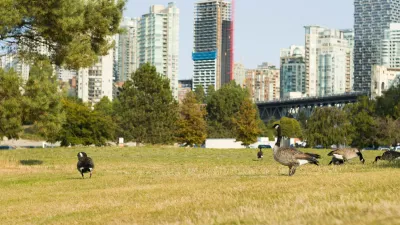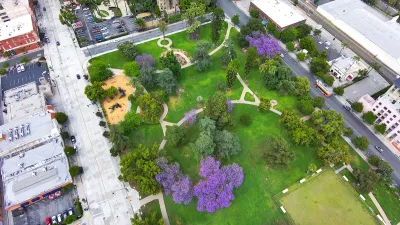When people think of Moscow, they're unlikely to envision lush green landscapes. But over the last two decades, thanks to a burgeoning environmental movement, the city has rapidly expanded its protected green space.
Sveta Samsonova provides a brief outline of the history, current state, and future prospects for Moscow's protected green spaces. "Precursors of today's protected areas have existed since the 16th century," she explains, "when some territories were placed under special protection by the royal family and nobility as hunting grounds and private estates."
Although a greenbelt around the city limits and ring of parks around the city center were established in Moscow's 1935 General Plan, "construction of factories, residential areas and roads significantly reduced the amount of green space in and around Moscow," from 1940-1980.
However, following mass protests in the late 1980s, "[t]he Moscow Soviet of People's Deputies (Mossovet) decided to set up a system of protected areas, and the second (Bitsa Park) appeared in 1992. Since then, the network has increased substantially. In 2004, the municipal government approved a plan for the 'Development and Management of Protected Areas in Moscow' with a list of existing and planned sites up to the year 2025."
FULL STORY: Protected Landscapes in Moscow

Planetizen Federal Action Tracker
A weekly monitor of how Trump’s orders and actions are impacting planners and planning in America.

Maui's Vacation Rental Debate Turns Ugly
Verbal attacks, misinformation campaigns and fistfights plague a high-stakes debate to convert thousands of vacation rentals into long-term housing.

Restaurant Patios Were a Pandemic Win — Why Were They so Hard to Keep?
Social distancing requirements and changes in travel patterns prompted cities to pilot new uses for street and sidewalk space. Then it got complicated.

In California Battle of Housing vs. Environment, Housing Just Won
A new state law significantly limits the power of CEQA, an environmental review law that served as a powerful tool for blocking new development.

Boulder Eliminates Parking Minimums Citywide
Officials estimate the cost of building a single underground parking space at up to $100,000.

Orange County, Florida Adopts Largest US “Sprawl Repair” Code
The ‘Orange Code’ seeks to rectify decades of sprawl-inducing, car-oriented development.
Urban Design for Planners 1: Software Tools
This six-course series explores essential urban design concepts using open source software and equips planners with the tools they need to participate fully in the urban design process.
Planning for Universal Design
Learn the tools for implementing Universal Design in planning regulations.
Heyer Gruel & Associates PA
JM Goldson LLC
Custer County Colorado
City of Camden Redevelopment Agency
City of Astoria
Transportation Research & Education Center (TREC) at Portland State University
Jefferson Parish Government
Camden Redevelopment Agency
City of Claremont





























